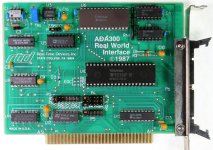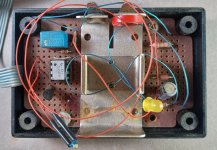tech58761
Experienced Member
I'm just curious if there was anything like a standard method for encoding 24-hour time back in the day.
I'm trying to pick apart some firmware to see how everything worked, but one of the biggest obstacles is not knowing how the time data was encoded.
I do know that the information was saved in 3-byte chunks (including day of the week), there were two schedules with up to 4 'schedule change' times available in each.
If I had some idea as to common time formats that would have been used to store the time of day back then, it would be an immense help in getting things figured out.
I do know we can rule out BCD right off the bat. The MPU used by this unit is a 6800 derivative, and the DAA opcode is noticeably absent in the code.
I am also fairly certain that the time would have been recorded in 24-hour format - but minutes? Seconds? Fractional hours? That's what I'm trying to figure out.
I can post a copy of the code if requested - if so, I can post a direct dump of the EPROMs and a copy I've been annotating as source code.
I'm trying to pick apart some firmware to see how everything worked, but one of the biggest obstacles is not knowing how the time data was encoded.
I do know that the information was saved in 3-byte chunks (including day of the week), there were two schedules with up to 4 'schedule change' times available in each.
If I had some idea as to common time formats that would have been used to store the time of day back then, it would be an immense help in getting things figured out.
I do know we can rule out BCD right off the bat. The MPU used by this unit is a 6800 derivative, and the DAA opcode is noticeably absent in the code.
I am also fairly certain that the time would have been recorded in 24-hour format - but minutes? Seconds? Fractional hours? That's what I'm trying to figure out.
I can post a copy of the code if requested - if so, I can post a direct dump of the EPROMs and a copy I've been annotating as source code.



